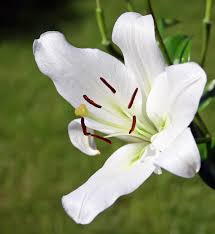The Easter Parade (of music)
By FUPress
31st March 2010
In 1853, the New York Herald wrote, “In former years Easter Sunday was observed in a pompous and splendid manner by the Europeans; but as the people continued to grow enlightened all those absurd and nonsensical customs have become obsolete.”
Not quite.

Easter crowds on Fifth Avenue outside St. Patrick’s Cathedral, New York City, 1904. (Library of Congress, Washington, D.C.)
I tried an experiment, asking a number of people to complete the phrase, “Easter _____.” The two most frequent responses were “eggs” and “parade.” Those answers make sense: Zoroastrians were painting eggs for their springtime “new year” celebrations some 2,500 years ago, chocolate eggs have been around for more than 150 years, and those dissolve-the tablet-in-hot-water egg decorating kits have been staining kitchen tabletops since 1893. As to the parade, New York seems to hold the patent. Back when the Herald was first jeering at those splendid and absurd customs, New York’s Easter was celebrated in fairly sedate style . . . except that a new outfit was considered indispensable, and many people invariably took a turn after church in order to show off. By the 1870s, when a number of the city’s wealthiest churches were clustered on a ten-block stretch of Fifth Avenue, the number of fashionable types increased exponentially and the post-church promenade had turned into an eye-popping event. By the mid-1880s, the New-York Tribune was using the phrase “Easter parade.” It stuck.

Pussy Willow Easter Bonnet
Then I asked some singers to complete the phrase “Easter _____.”
There wasn’t a response, at least not in words. Instead, a sticking-out of the tongue enhanced by a faint strangulation noise, rolling of the eyes, groans, a shaking of the head, a sigh. Singers are thinking of the music, which asks a lot. Even a century ago, when things were couched in much more genteel terms, Harper’s admired the Holy Week music heard in New York but acknowledged that the city’s organists “should be credited with phenomenal powers of endurance in that they survive the ordeals of the season.”
The situation hasn’t changed with the years. The run-up to Christmas may demand a lot from a singer, but Easter—more precisely, Holy Week—demands it in more concentrated fashion. At St. Patrick’s Cathedral, choristers will be asked during that week to participate in as many as nine services and eight rehearsals. (Some of that singing takes place at the altar, which by Easter Sunday will be surrounded by a sea of lilies. Guess who’s allergic to lilies.)
But exhaustion and hay fever notwithstanding, it’s worth it. 
The history contained in Fifth Avenue Famous shows that St. Patrick’s musicians have willingly dealt with stress, exhaustion and long hours for over 125 years, in an effort to heighten the experience of Cathedral visitors. (Then again, one story tells of the 1880s violinist who got up at the end of a pre-Easter rehearsal, smashed his instrument into pieces, tore off his jacket and shoes, and ran out of the Cathedral. He was ultimately taken to Bellevue. Maybe not all musicians have dealt with the stress that well.) Written by
Salvatore Basile, author of Fifth Avenue Famous:The Extraordinary Story of Music at St. Patrick’s Cathedral.
♬♬♬
